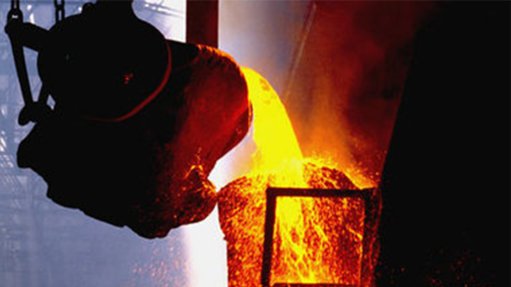South Africa's mining industry making strides in health and safety
CAPE TOWN (miningweekly.com) – The South African mining industry is making strides in improving its health and safety performance, but more needs to be done on site, as well as off site, to keep employees safe, says the Minerals Council South Africa.
The council reiterated during the 2020 Investing in African Mining Indaba, in Cape Town, this week, that the fatality rate in the mining industry in 2019 had reached the lowest in recorded history.
The council said mining deaths in 2019 had decreased by 92% since 1993, while the number of injuries had dropped by 72% over the same period.
Minerals Council CEO Roger Baxter said he was very pleased with the declining rate of fatalities. It was in line with the council's new strategy, Khumbul’ekhaya, meaning ‘remember home’ so named as the industry recognised that fatalities had the greatest impact on loved ones at home.
The strategy is led by the Mineral Council’s CEO Zero Harm Forum.
On the back of a tough year in 2018, when 81 people in the industry died, the Minerals Council got 34 CEOs from mining companies together in January 2019. This culminated in the CEO-led strategy on health and safety, explained Baxter.
It is aimed at ensuring every mineworker returns home, unharmed, every day and has galvanised industry players into action.
In 2019, there were 51 fatalities, a 37% year-on-year decrease.
“We have seen a significant decline, although we are aware that 51 people still lost their lives,” said Baxter.
He said critical controls and behavioural change had been encouraged and adopted across the mining sector, in which 435 000 people are employed. Health and safety days hosted at several operations have also helped to raise awareness. The industry was also working with organised labour and government on boosting health and improving safety.
Thirty per cent of the injuries in the mining sector are owing to people being hurt in the proximity of machines or being hit by machines. Concerted efforts are being made to switch off machines when people are near them or behind them, said Baxter.
Meanwhile, tuberculosis (TB) prevalence in the mining sector is now below the national average. This is the result of a target set five years ago, said Baxter. He said 90% of people working in the industry had been tested for TB, while the council had done a lot of work to ensure that people were properly treated, and that they completed their treatment.
There is a great danger of multi-drug resistant TB when people do not sustain and complete their TB treatment.
The Minerals Council said the incidence of TB had decreased by 63% since 2008, while silicosis incidence has dropped by 56% since 2008. Many of the gains have been recent. While statistics for 2019 haven’t been reported yet, there were sharp drops between 2017 and 2018, with silicosis decreasing by 29% during that time, and TB decreasing by 24%.
HIV counseling had also increased to 83% in recent years.
Minerals Council head of safety and sustainability Dr Sizwe Phakathi said the council was learning valuable lessons from other industries, such as aviation and the nuclear industries, in stepping up health and safety. The CEO Forum was also working with suppliers and manufacturers in efforts to improve health and safety.
He said modernising mines was also making an impact, with systems available to track miners as quickly as possible if disasters occur, as well as other steps, such as controls which let people know whether dust levels are above or below target.
Baxter said the importance of keeping people safe and healthy needed to also extend beyond the mines.
“Our employees often have to travel to work in overloaded taxis and at unsafe speeds. When they get to the mines, we expect them to have a total change of mindset. This is not just a mining conversation. This is a national conversation. We have made tremendous progress but we also need members of society to work with us.”
Article Enquiry
Email Article
Save Article
Feedback
To advertise email advertising@creamermedia.co.za or click here
Press Office
Announcements
What's On
Subscribe to improve your user experience...
Option 1 (equivalent of R125 a month):
Receive a weekly copy of Creamer Media's Engineering News & Mining Weekly magazine
(print copy for those in South Africa and e-magazine for those outside of South Africa)
Receive daily email newsletters
Access to full search results
Access archive of magazine back copies
Access to Projects in Progress
Access to ONE Research Report of your choice in PDF format
Option 2 (equivalent of R375 a month):
All benefits from Option 1
PLUS
Access to Creamer Media's Research Channel Africa for ALL Research Reports, in PDF format, on various industrial and mining sectors
including Electricity; Water; Energy Transition; Hydrogen; Roads, Rail and Ports; Coal; Gold; Platinum; Battery Metals; etc.
Already a subscriber?
Forgotten your password?
Receive weekly copy of Creamer Media's Engineering News & Mining Weekly magazine (print copy for those in South Africa and e-magazine for those outside of South Africa)
➕
Recieve daily email newsletters
➕
Access to full search results
➕
Access archive of magazine back copies
➕
Access to Projects in Progress
➕
Access to ONE Research Report of your choice in PDF format
RESEARCH CHANNEL AFRICA
R4500 (equivalent of R375 a month)
SUBSCRIBEAll benefits from Option 1
➕
Access to Creamer Media's Research Channel Africa for ALL Research Reports on various industrial and mining sectors, in PDF format, including on:
Electricity
➕
Water
➕
Energy Transition
➕
Hydrogen
➕
Roads, Rail and Ports
➕
Coal
➕
Gold
➕
Platinum
➕
Battery Metals
➕
etc.
Receive all benefits from Option 1 or Option 2 delivered to numerous people at your company
➕
Multiple User names and Passwords for simultaneous log-ins
➕
Intranet integration access to all in your organisation


















